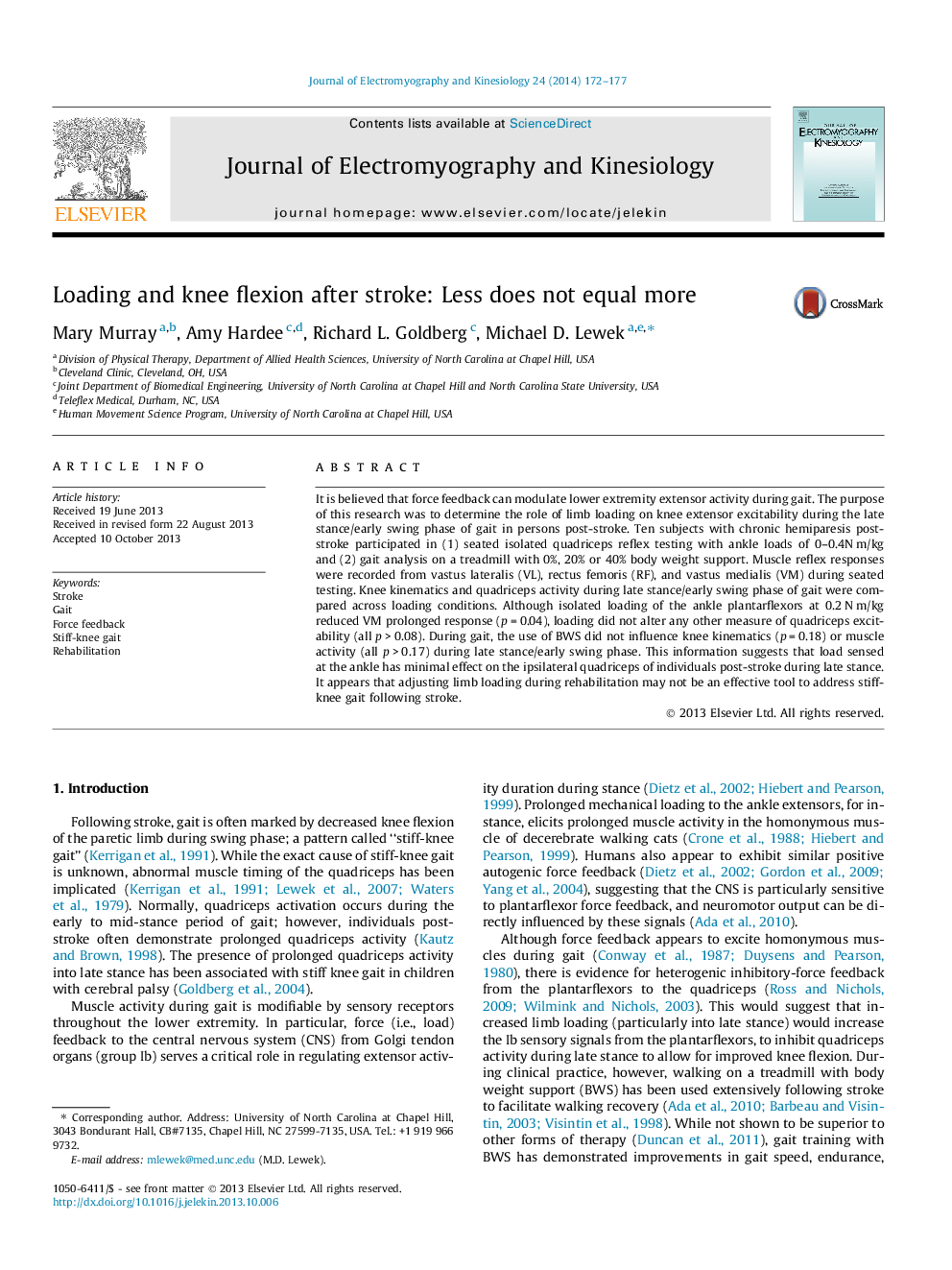| Article ID | Journal | Published Year | Pages | File Type |
|---|---|---|---|---|
| 4064647 | Journal of Electromyography and Kinesiology | 2014 | 6 Pages |
It is believed that force feedback can modulate lower extremity extensor activity during gait. The purpose of this research was to determine the role of limb loading on knee extensor excitability during the late stance/early swing phase of gait in persons post-stroke. Ten subjects with chronic hemiparesis post-stroke participated in (1) seated isolated quadriceps reflex testing with ankle loads of 0–0.4N m/kg and (2) gait analysis on a treadmill with 0%, 20% or 40% body weight support. Muscle reflex responses were recorded from vastus lateralis (VL), rectus femoris (RF), and vastus medialis (VM) during seated testing. Knee kinematics and quadriceps activity during late stance/early swing phase of gait were compared across loading conditions. Although isolated loading of the ankle plantarflexors at 0.2 N m/kg reduced VM prolonged response (p = 0.04), loading did not alter any other measure of quadriceps excitability (all p > 0.08). During gait, the use of BWS did not influence knee kinematics (p = 0.18) or muscle activity (all p > 0.17) during late stance/early swing phase. This information suggests that load sensed at the ankle has minimal effect on the ipsilateral quadriceps of individuals post-stroke during late stance. It appears that adjusting limb loading during rehabilitation may not be an effective tool to address stiff-knee gait following stroke.
